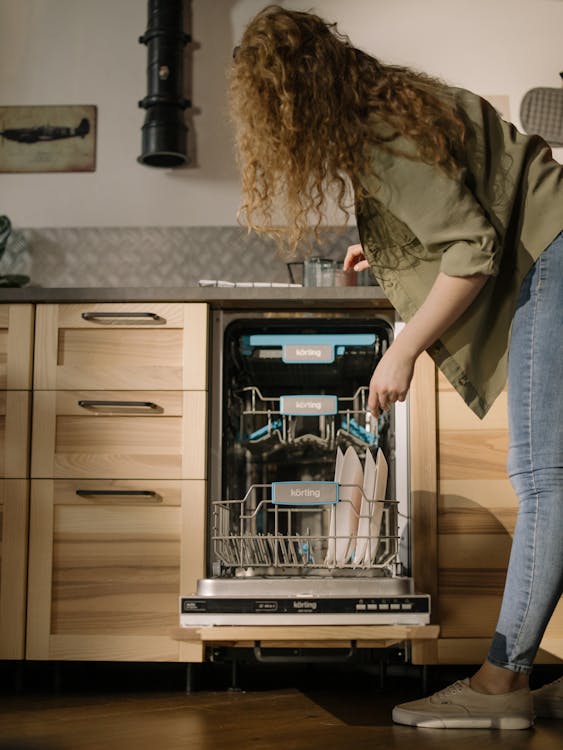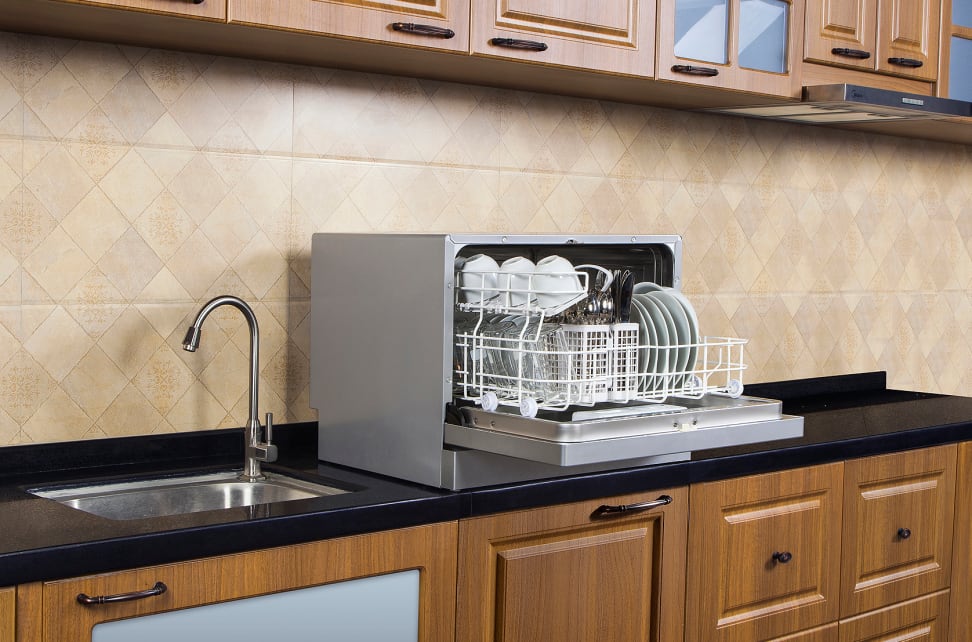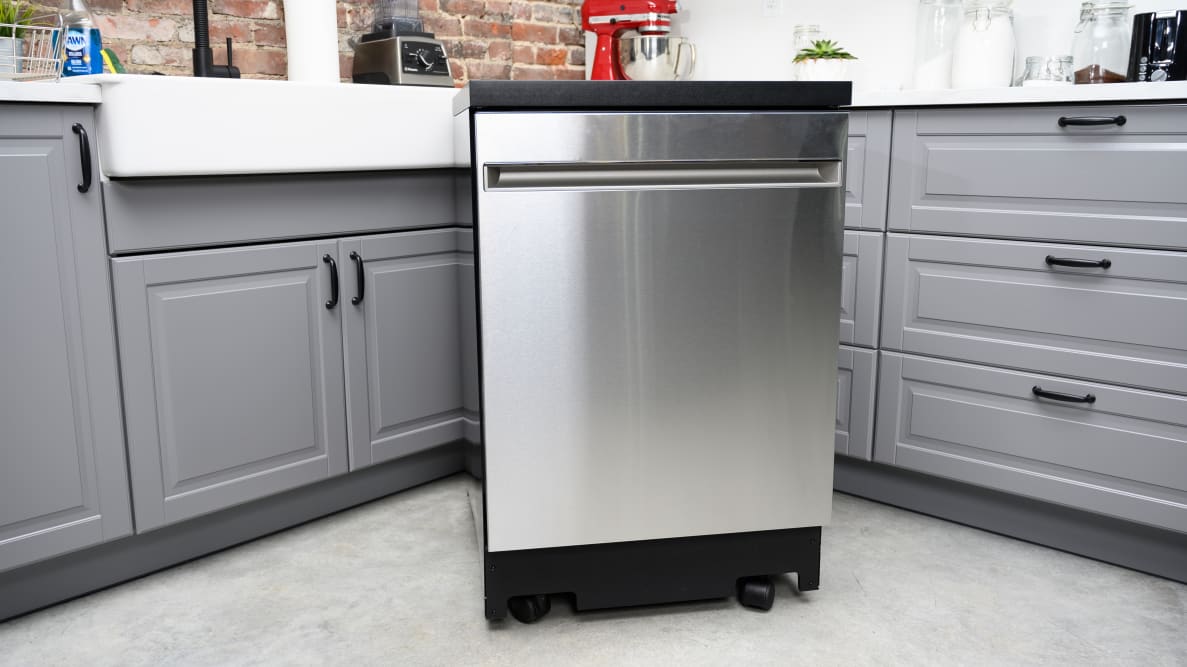
Complete Guide to the Different Types of Dishwashers
Question for you, how much do you enjoy washing a pile of dishes and utensils after a big nice meal?
Let us guess... Not too much, right? Well, you're definitely not alone in there, and fortunately for all of us who prefer to devour the contents of plates instead of washing them, Dishwashers machines have been around for a while, allowing homes all across the globe to avoid or reduce any effort required from that time-consuming activity.
Whether you're tired of washing dishes by hand, and are looking to get initiated into the dishwasher world, or need to give your current machine a very deserved rest and want to buy a new one, or keep experiencing any issues with its performance, this guide might just be what you needed to read.
How to choose the best dishwasher for your home
A good initial step is to ask yourself how will you use your dishwasher? how often will it run a cycle? Do you have large pots, pans and baking dishes that need regular washing? How important is the noise factor?
For most people a standard 60cm width built-in model will do the trick. Built-in dishwashers have unfinished sides and are designed to be installed under a countertop. Many built-in dishwashers have a tall-tub design, which provides more interior space for larger loads and tall items as well. Now, If your kitchen is smaller or what you need is a dishwasher for an office or a second area in the home, like a bar area or second kitchen, compact models (45cm width) are ideal.
Another way to measure a dishwasher’s capacity is in place settings. One place setting is made up of ten items. Generally, this is considered to be a dinner plate, side plate, saucer, bowl, coffee cup, drinking glass, knife, fork and two teaspoons.
Most full-sized dishwashers can hold between 12 and 15 place settings, while slimline dishwashers typically hold between 9 and 11.
Depending on the size of your household, you may want to look for dishwashers with the right capacity. Keep in mind that if you don’t think you’ll fill the dishwasher before you need to run it, you may want to opt for a slimline model.
Dishwashers come in three types:
Integrated dishwashers have a full-size kitchen cabinet door attached to the front of the appliance. This makes it look like it’s built into the kitchen furniture and completely hides the appliance.


Integrated and semi-integrated appliances give a sleek appearance to any kitchen. They are often used in modern kitchens to help create that seamless and uninterrupted look.
| Integrated | |
| Pros |
|
| Cons |
|
Freestanding dishwashers come with a finished door front as part of the appliance. These appliances do not need a kitchen cabinet door attaching to the front of them. They are available in different finish options such as white, black and stainless steel.

| Freestanding | |
| Pros |
|
| Cons |
|
Check our collections for Freestanding Dishwashers and Integrated Dishwashers.
Besides built-in, you can also find Portable/Countertop dishwashers
- Countertop dishwashers
Designed to sit on a counter. These machines typically measure between 50 to 60cm wide, 55 to 60cm deep and 64 to 70cm high. These machines use a water intake hose connected to the kitchen sink faucet, a drain hose that releases the dirty water into the sink and needs a nearby electrical outlet to provide power. Countertop units can accommodate between six and eight place settings per wash.

- Portable dishwashers
Great options for renters and people living in smaller spaces. These units typically measure 50 to 64cm wide, 68 to 76cm deep and 86 to 96cm high. They are slightly larger than countertop units and can accommodate eight to 12 place settings per wash—portable units are designed to be stowed away when not in use. However, these machines will need access to the kitchen sink for water and drainage like the countertop units.

Other things to consider for your dishwasher
- Energy Rating
As a general rule, full-sized dishwashers are more efficient than slimline models simply because they can wash more in one go. Similarly, it will always be more efficient if you fill your dishwasher to get the most out of each cycle.
- Speed and Cycles
A typical dishwasher features at least three settings: normal, heavy and light. Wash cycle selections will vary from dishwasher to dishwasher, and one with programmable or built-in modes for quick wash, delicate, rinse and hold, etc., will generally cost more but may save you money on power and water in the long run.
- Drying Performance
Economical dishwashers use the residual heat in the tub to dry the dishes. In most cases, this is sufficient. However, some dishwashers come with options for extra drying and may include a heating element to dry the dishes coupled with a fan to circulate the warm air that expedites the drying process.
- Customizable Layouts
The ability to adjust the internal configuration of a dishwasher can be very helpful. Check whether the upper rack can be moved up or down to help give more space for larger pans at the bottom or taller wine glasses at the top. Having flexible items like removable cutlery baskets means you can fit in larger pans and dishes. And prongs that can be laid flat or stood up help to allow different sized items to fit or be held in place.
- Noise Level
This will be measured in decibels (dB) and will usually tell you the noise level on the maximum setting. The type, make and model of the dishwasher will all impact the noise level, so check and make sure it’s not super noisy if this is important to you. Generally, integrated dishwashers are quieter than freestanding ones, which may be a consideration if you have an open planned kitchen-living space.
- Tub Material
Dishwasher tubs are either stainless steel or plastic. Stainless steel tubs resist stains and odors, dry out faster and are more durable. However, they are also more expensive. Plastic tubs are just as durable but are not as stain-resistant. The exterior finish does not indicate whether the tub is stainless steel or plastic. However, the tub material does not affect cleaning performance.
- Filters
The filter keeps the wash water free of food, so it is not redeposited onto the clean dishes. There are two types: self-cleaning and manual.
- Self-cleaning filters feature a grinder that pulverizes the debris and flushes it down the drain.
- Manual filters need to be removed and cleaned often to keep them free of debris.
Tips to use your dishwasher correctly and get the most out of it
- Don't pre-rinse your dishes
Forget about spending a lot of time pre-rinsing dishes before putting them in the dishwasher. Not rinsing your dirty dishes first might be a way to get back a little bit of your precious time because believe it or not, pre-rinsing is not only unnecessary, but also it wastes water and worsens your detergent's performance.
- Right Type and Amount of Detergent
First, read your dishwasher's owner's manual for the recommendations of the manufacturer. Detergent come in three common forms: powders, tablets, and gels. When choosing the best detergent, there are several factors to consider, including the price, the type of your dishwasher and your lifestyle. Make sure to use only the recommended amount of detergent because too much can leave behind a residue, and too little can result in dirty dishes. You may want to try several types and brands to find the one that best matches your needs.
- Load the dishwasher correctly
The bottom rack of your dishwasher is usually the place where the strongest cleaning happens. The water jets here are designed to tackle heavily soiled pots and pans as well as plates, so make sure not to place lightly soiled plastic cups or Tupperware bowls here. They may deform. Instead, use this large compartment to place your pots and pans, your plates and large bowls. Remember to place dishes in the dishwasher with the soiled surfaces facing down to ensure perfect cleaning.
As for plates, place them vertically in the rack. You don’t need to leave more free room between them than the rack allows, by the way. Don’t waste space by only putting plates in every other rack opening.
For cutlery:
If your dishwasher has a basket for cutlery in the bottom rack, place your cutlery in it, with the handles facing down. However, you may want to place sharp knives in the basket with the blades facing down to avoid injury. Alternatively, place knives and other long utensils between your cups and bowls in the top rack, with the blades facing down. If your dishwasher has an extra cutlery rack at the top of the appliance, place cutlery in it with any sharp blades facing down.
In the top rack, place glasses and cups with their bottoms up to allow the water jets to spray the inside of glasses without water getting collected in them. There is also usually room in the center to place small bowls or saucers that are too small for the bottom rack.
Don't forget to make sure that the water sprayer arms aren’t obstructed by any dishes before you close your dishwasher after loading it.
- Choose the correct dishwasher program
A big part of using your dishwasher correctly is choosing the best program for your dishes. Depending on the manufacturer, dishwashers may offer different programs, but almost all share three basic cycles:
- Quick cycle: uses higher temperatures and more water to clean lightly soiled dishes more quickly.
- Intensive cycle: is best used for heavily soiled pots and pans.
- Normal cycle: can be used for your everyday cleaning. Unless you need your dishes cleaned extra quickly or they’re extra dirty, we recommend that you opt for the Normal cycle to save water and electricity.
- Clean the filter
If your dishwasher is not draining properly, the filter could be the culprit. When not carefully maintained, the filter retains all the food particles and scraps from your dirty dishes. Be sure to spray out the filter or wash the filter in the sink with hot water to reduce bacteria and buildup.
- Avoid Overloading the Racks
You may want to run your dishwasher when it is full because this saves time and resources, but overfilling it will not allow it to wash properly. Overloading prevents dishes from getting thoroughly cleaned and may cause you to rinse the same dishes twice. Educate yourself and your family members about the correct way to load the dishwasher by reading the manual that came with your machine. Your manual will recommend a loading method that works best for your dishwasher.
- Stop Putting These Things in the Dishwasher
Knives, blades and any sharp-edged tools, any metal except stainless steel, utensils with metallic decoration, delicate glassware, anything wood, crystal, plastics not labeled as "dishwasher-safe", rubber tools.
Now that you are well aware of all these #DishwasherFacts , why don't you take a look at our collection, where maybe you can find the Dishwasher of your dreams that helps you save all the time, money and effort that washing dishes by hand had taken out of your life.
